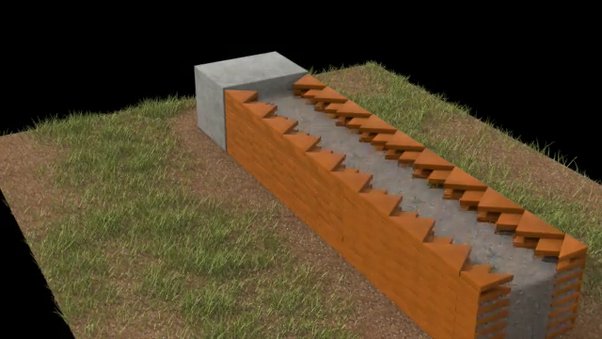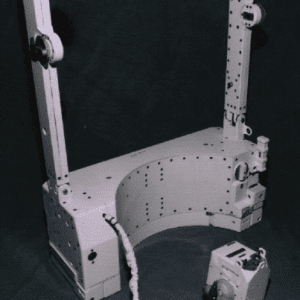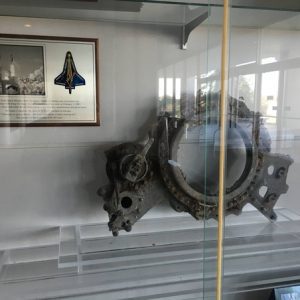Roman’s were lucky. Roman concrete is amazingly strong because of its chemistry. Modern-day concrete is typically made of ‘Portland cement’ that is then mixed with water and aggregate (like gravel). Portland cement-based concrete does deteriorate over time. A common attempt to make it stronger is to embed steel reinforcing rods in it.
This does increase its ‘tensile’ strength considerably—far beyond anything that Roman concrete could do. For instance, Roman concrete could never be used for a freeway overpass span like is commonly used today. However, steel reinforcement has one major drawback: steel rusts. This not only weakens the material but it also expands causing cracks and other weaknesses in the concrete.
So, one of the reasons that Roman concrete structures have lasted for millennia is that the Romans only used it in so-called ‘compression’ mode, never in tensile mode (in other words for structures like columns, arches, and domes—never for horizontal elements like beams). Because concrete is only used in compression, the more weight it carries, the stronger it becomes.
Perhaps the most important reason Roman concrete is so strong, though, is that it is made with ‘pozzolana’ ash instead of Portland cement. Pozzolana ash is volcanic ash and the Romans were incredibly lucky in that pozzolana-based concrete actually grows stronger with age, especially if it has been mixed with sea water. This has been recently been shown through studies made at the University of Utah.
Surprisingly, mixing pozzolana ash with sea water creates something called aluminous tobermorite, a rare silica-based mineral that’s actually very hard to make in the lab, but is abundant in the ancient Roman concrete and causes the concrete to grow more rock-like with age.
This not only makes ordinary concrete structures stronger, but it works like a miracle with underwater structures like harbor foundations.
The pozzolana not only hardens underwater, but the sea water makes the concrete harder because the aluminous tobermorite actually grows in the concrete thanks to the sea water sloshing around it, slowly dissolving the volcanic ash within and giving it space to develop a reinforced structure from these interlocking crystals of aluminous tobermorite. As a result, according to the researchers: “The Romans created a rock-like concrete” by using pozzolana.

Of course, that still begs the question of why are Roman structures such as the Basilica of Constantine in Trier, Germany still standing when there wasn’t any sea water around to use?

There are other reasons for that, such as the technique they used for such structures, called opus testaceum, as seen in the graphic below:

This is where the builders would created two walls of brick spaced a two or three feet apart, and then pour concrete (which had been mixed with only a bare minimum of water) into the ‘form’ thus created, and firmly compact it (which made it stronger).
As well as simply making walls really thick….
Anyway, there you go. Those Romans just kept thinking of everything….






